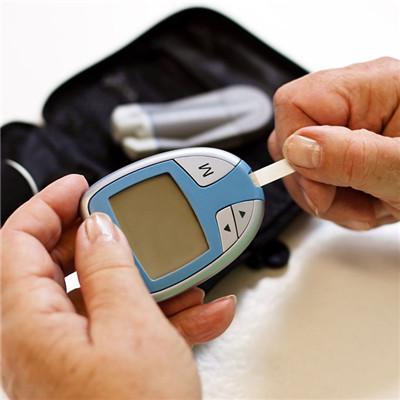How to diagnose infective endocarditis?
summary
Infective endocarditis will lead to higher mortality and complication rate. Generally, it is difficult to get good treatment by taking medicine, and taking medicine is only to alleviate the disease. Therefore, although it is rare, we still need to pay enough attention to it. Due to the rarity of the disease, the large-scale research progress related to infective endocarditis is difficult, so the evidence-based medicine evidence that the guidelines can explore is very few. Next, I will share how to diagnose infective endocarditis?. Hope to help you.
How to diagnose infective endocarditis?
First: systemic infection fever is the most common, often with unexplained persistent fever for more than a week, irregular low fever, intermittent fever or flaccid fever, accompanied by fatigue, night sweats, progressive anemia, splenomegaly, and pestle finger in late stage. (1) fever: 80% ~ 88% of the cases have fever, the heat type is changeable, irregular fever is the most common, mostly between 37.5 ℃ and 39 ℃, which can be intermittent fever or flaccid fever. Many cases show low fever, which can be accompanied by chills or sweating. In recent years, many patients have no fever, which may be related to the early use of antibiotics, and the elderly patients may be related to poor responsiveness. (2) other infection related symptoms: such as fatigue, loss of appetite, weight loss, progressive anemia, sweating and muscle soreness. (3) clubbing fingers (toes): most of them appear 1-2 months after the onset of IE, and there is no cyanosis. In the past, about 1 / 3 cases were seen, and as one of the important signs of IE, but it has been greatly reduced in recent years. In the past, at least half of the patients had splenomegaly, and 1 / 4 of the patients had hepatomegaly. However, in recent years, hepatosplenomegaly has also decreased significantly.

Second: the heart performance depends on the type of original heart disease, the type of pathogens and the degree of valve or intimal damage. Due to the growth or shedding of vegetations, the destruction of valves and chordae tendineae, the murmurs are changeable, or new murmurs appear. If there is no murmur, endocarditis can not be excluded, and heart failure may occur in late stage. When the infection affects atrioventricular bundle or ventricular septum, it can cause atrioventricular block and bundle branch block, premature beat or atrial fibrillation. Arrhythmia is not uncommon in subacute infective endocarditis. Most of them are ventricular premature contractions, followed by atrial fibrillation and prolonged P-R interval. 4% of cases can have high atrioventricular block. Severe arrhythmia has become an important cause of death.

Third: embolic phenomena and vascular lesions (1) skin and mucosal lesions are caused by the increased fragility of capillaries due to the action of infectious toxins, resulting in rupture and bleeding, or micro embolism. Ecchymosis may appear in batches on the skin, ocular alkali binding membrane and oral mucosa of the extremities, purple or red Osler nodules slightly higher than the surface may appear on the palmar surface of the fingers and toes, and small nodular bleeding points (janewy nodules) may also appear on the palms or feet without tenderness. (2) cerebral vascular lesions may have the following manifestations: ① meningoencephalitis is similar to tuberculous meningitis, with increased CSF pressure, increased protein and white blood cell counts, and normal chloride or sugar content. ② Intracerebral hemorrhage has persistent headache or meningeal irritation, which is caused by rupture of bacterial aneurysm. ③ The patient with cerebral embolism has fever and suddenly appears paralysis or blindness. ④ Central retinal embolism can cause sudden blindness. (3) renal embolism is the most common, accounting for about 1 / 2 of the cases, with gross or microscopic hematuria. Severe renal insufficiency is often caused by the deposition of antigen antibody complex in the renal glomeruli after bacterial infection, resulting in glomerular nephritis. (4) pulmonary embolism is common in patients with congenital heart disease and infective endocarditis. Most of the vegetations are located in the right ventricle or the intima of the pulmonary artery, with acute onset, chest pain, dyspnea, hemoptysis, cyanosis or shock. If infarct area is small, also can have no apparent symptom.

matters needing attention
1. Health education should focus on prevention, publicize the basic heart disease, predisposing factors, pathogenesis, clinical manifestations and harmfulness of the disease to the masses, and advise people to stay away from drugs. For intravenous drug addicts, it is an important way to persuade them to actively detoxify and reduce infective endocarditis. For the patients with congenital heart disease who have been operated, if there are still hemodynamic changes, we must pay attention to the prevention. For patients with persistent congenital heart disease and acquired valvular heart disease, we should let them master the knowledge about the prevention of this disease and the specific use of antibiotics. At the same time, we should also let all medical staff be familiar with the necessity and specific methods of prevention for high-risk patients. 2. Prophylactic medication due to the high morbidity and mortality of the disease, effective preventive measures should be actively taken, and primary prevention is the most important. If you have rheumatic valvular disease or congenital heart disease, you should pay attention to oral hygiene, deal with all kinds of infection focus in time, and give antibiotics before operation or instrument examination. Endocarditis often occurs about two weeks after surgery. Because there is bacteremia in the early stage of the disease, we should start from the prevention of bacteremia. Many scholars have found that temporary bacteremia often occurs after tooth extraction, especially in the case of periodontal disease or simultaneous extraction of multiple teeth. Many oral bacteria can enter the blood through the wound, but Streptococcus viridis is the most common. Enterococcus and gram-negative bacilli bacteremia are often caused by trauma and infection of digestive tract and urogenital system. Staphylococcal bacteremia occurs in infections of the skin and away from the heart. After the bacteria enter the blood circulation, it may not cause the disease, but it may pose a serious threat to the patients with the original basic heart disease. Because the disease can occur on the basis of organic heart disease, it can also be caused by invasive surgery, but whether the disease is related to the type of invasive pathogens, heart valve disease and its hemodynamic changes, the body's immunity and other factors, so the use of antibiotics to prevent the disease should be active, but also to avoid abuse.
















